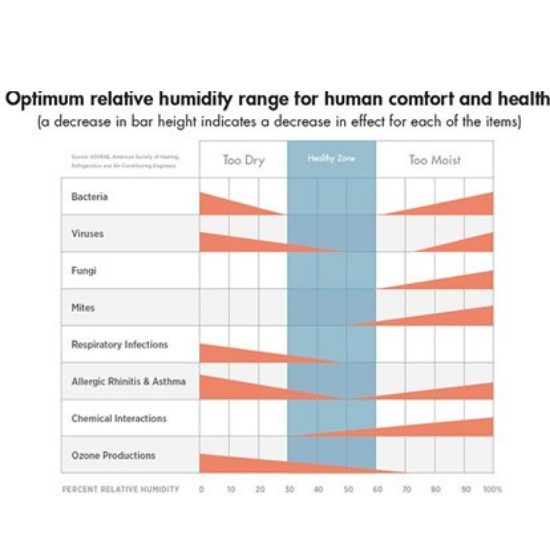
Landlord Maintenance Responsibilities for Condensation and Mould
Landlords have a legal responsibility and a duty of care towards their tenants to ensure that the property is free of damp and mould.
Landlord Maintenance Responsibilities
By Anthony O'Neill, Residential Technical Sales Engineer, January 2022
Not only do damp, mouldy conditions create an unpleasant environment to live in, but they can also cause long-term health conditions for the occupant.
Damp in the property can damage walls, furniture, and the property's structure. It also creates a thriving environment for mould and mites linked to health conditions such as asthma, allergies, and other respiratory problems. Condensation damp and mould problems are common in British households, with more than a third of all households (37%) reporting condensation issues.
Landlords are responsible for the exterior of the property, the supply of water, the maintenance of the plumbing, and any damage these external factors cause to the interior. When condensation damp and mould issues become present in the form of wet patches, peeling wallpaper, streaming windows, musky smells, and black stains, the property has likely been suffering for a while.
The first step to a solution is to understand the problem by diagnosing what type of damp and mould affects the property.
How Condensation Damp and Mould Develops
Condensation damp and mould are caused by high humidity within the property.
This usually occurs when the relative humidity regularly exceeds 60% inside the building. Research from the Building Science Corporation found that humidity of 70% or higher adjacent to a surface can cause serious damage to the property.
The Health and Safety Executive also recommends that relative humidity indoors should be maintained at 40-70%.

Reducing and Preventing High Humidity
Both tenants and landlords can reduce and prevent high levels of relative humidity in the property. Many of the prevention measures are also effective in dealing with existing issues.
- Ensure the property is well ventilated
- Avoid drying clothes indoors
- Cover pans when cooking
- Close internal doors when showering
- Install indoor air quality monitors
- Ensure the property is consistently heated
- Maintain mechanical extractor fans
Ventilation is key. However, opening windows won’t always be an effective means of removing the excess humidity. A more lasting solution involves installing mechanical ventilation units to get air circulating through the home, which will carry the moisture away from the property.
If the property’s humidity level is within the comfort level outlined by the Health and Safety Executive, there may be other factors causing damp and mould problems.
Penetrating and Rising Damp
Penetrating damp is caused when water leaks through external walls or the roof or an internal leak or plumbing problem. When penetrating damp is caused by repair issues, the landlord’s responsibility is to deal with it.
Rising damp occurs when moisture beneath the building is soaked up into the bricks or concrete. Some buildings, such as older properties, are more vulnerable to rising damp. Repair issues can also cause rising damp. The landlord is responsible for investigating the cause of rising damp and may also be instructed to carry out works if the council thinks the damp is a hazard.
Landlords must ensure that the home is fit for human habitation. Failure to comply can result in legal fees and compensation claims. At Nuaire, we have a range of landlord ventilation solutions to ensure properties are habitual and safe for tenants.
